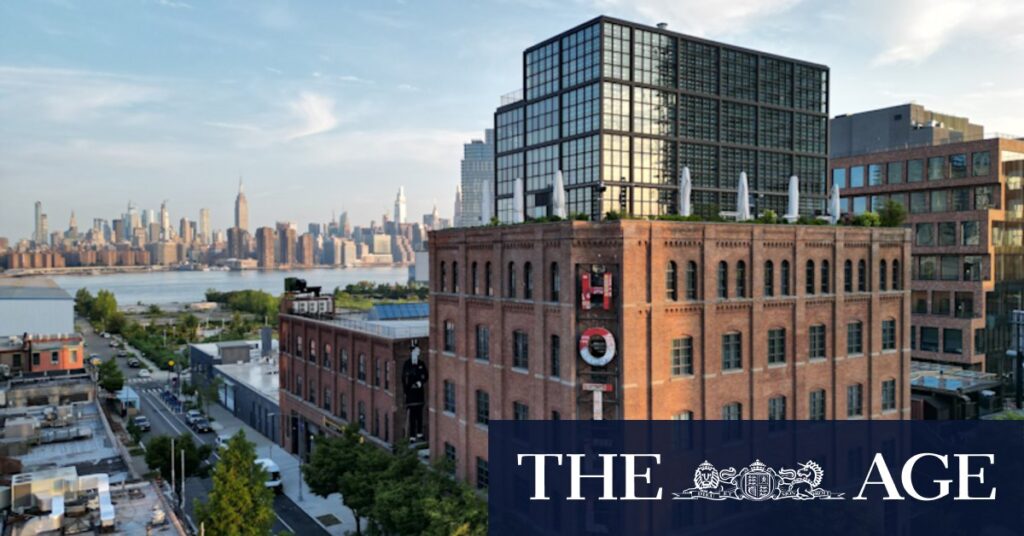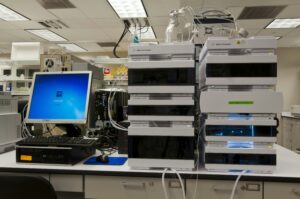
October 25, 2025 — 5:00am
When I first started visiting Williamsburg about 25 years ago, it was nothing like it is today. A short subway ride from Manhattan, it felt like an entirely different city. Musicians, writers, and artists were moving in droves, squeezed out of the East Village and Lower East Side by rising rents and gentrification. Despite the emergence of cool bars, cafes, and stores, Williamsburg still felt like a wild outpost compared to Manhattan. Its geography and architecture were a stark contrast—low-slung three-story apartment buildings, stretches of empty lots, a waterfront lined with abandoned warehouses, and vibrant migrant communities from Poland, Ukraine, Puerto Rico, and the Dominican Republic.
Each year, on my trips to New York, I marveled at how quickly Williamsburg hipsterized, then gentrified, then hyper-gentrified. Today, Williamsburg is New York on steroids, the epicenter of everything hot in the city. This year, I decided to stay there for a few days to see what has changed and what has remained from the old days, referring to the ’90s to mid-2000s.
Transformation Through Culinary and Hospitality Ventures
Perhaps no two places represent Williamsburg’s transformation better than Diner and the Wythe Hotel—both evolved from one man. Back in the early ’90s, Andrew Tarlow was a struggling artist working in Tribeca’s The Odeon. Unable to afford Manhattan, he moved to Williamsburg, tempted by a $500 rent for a huge loft. In 1998, he opened Diner in a converted 1920s railway dining car on the southern side of Williamsburg.
“It was desolate down there,” Tarlow told me a decade ago. “That’s the only word I can think of to describe it. No cars. No people. Empty lots. There was just nothing.”
“Build it and they will come.”
Diner became a hotspot, its ethical/local take on modern American cooking making it a sensation. It helped kickstart the Brooklyn artisanal food movement, aided by Smorgasburg, an open-air food bazaar that debuted in 2011. Every Saturday at Marsha P Johnson State Park, 70 or so local stallholders sell everything from empanadas to cupcakes.
Tarlow’s next move was bolder. He and his partners bought an old factory and built the 72-room Wythe Hotel, which opened in 2012 and was an immediate hit, paving the way for other hotels like Moxy Brooklyn Williamsburg.
Preserving the Old Amidst the New
Walking around the neighborhood today, some places have survived. Spoonbill & Sugartown Books, a much-loved bookstore since 1999, still fronts the mini-mall on Bedford Avenue. The City Reliquary, an eccentric museum since 2006, offers a window into New York history with collections of subway tokens and World’s Fair memorabilia.
Union Pool, a rock club under the Brooklyn-Queens Expressway, still caters to a new generation. The Music Hall of Williamsburg, which opened in 2007, continues to host alternative music acts.
The Brewing Renaissance
In the early 1900s, beer was Williamsburg’s lifeblood. At its height, there were 48 breweries in Brooklyn, but Prohibition reduced that number. In 1996, Brooklyn Brewery opened in Williamsburg. Steve Hindy, a former foreign correspondent, and Tom Potter, a banker, founded it.
“May Brooklyn never again be without a brewery,” Hindy declared at the grand opening.
Today, Brooklyn boasts a growing list of breweries, a testament to the area’s revival.
Williamsburg’s Cultural and Recreational Evolution
Combining food and booze with other activities is quintessentially Williamsburg. At Nitehawk Cinema, patrons enjoy cocktails and cheese plates while watching movies. Brooklyn Bowl offers craft beer, bowling, and live music under one roof.
Brunch and coffee are competitive sports here. Popular spots like Juliette and Sunday In Brooklyn are bustling on weekends. Coffee shops like Partners and Devocion offer not just great brews but unique experiences.
Walking the Williamsburg waterfront today, down by the old Domino Sugar Refinery, now transformed into Domino Park, reveals a vibrant public space with fountains, dog parks, and more. The area is unrecognizable from its past.
Mayor Michael Bloomberg’s 2005 rezoning of the waterfront allowed for massive condominium towers, transforming the area. The sugar refinery is being developed as Refinery At Domino, with 6000 apartments and office space, set to open in 2027.
The Debate Over Gentrification
The new Williamsburg divides opinions. Celebrated as a triumph of gentrification, it’s also criticized for losing its affordable, alternative scene. If Andrew Tarlow were a young artist today, he might not afford Williamsburg. Perhaps he’d try Ridgewood in Queens, touted as the next cool neighborhood.
As a waiter at Sunday In Brooklyn remarked, “I had someone in here yesterday who was last in Williamsburg in 2019 and he said, ‘What the hell happened? I hardly recognize the place.’ That’s how quickly things change here.”
Yet, Steven Svymberksy, owner of Quimby’s Bookstore, believes, “Williamsburg is still hip despite all the gentrification. There are still used clothing shops, old Mexican restaurants, dive bars, and cool stores. You just have to look for them.”
Travel Details
Fly: Delta Air Lines offers flights from Sydney to LAX, with connections to New York’s JFK. See delta.com.
Visit: To reach Williamsburg from Manhattan, take a Brooklyn-bound L train, which runs along 14th Street. Get off at Bedford Avenue, the first stop across the East River, and you’re in the heart of Williamsburg.







